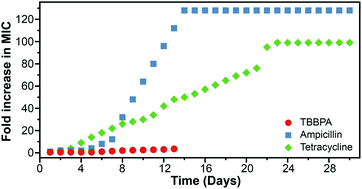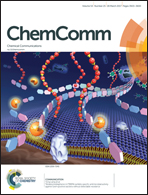Tetrabromobisphenol A (TBBPA) exhibits specific antimicrobial activity against Gram-positive bacteria without detectable resistance†
Abstract
We report here the antimicrobial ability of tetrabromobisphenol A (TBBPA) against Gram-positive bacteria without detectable resistance. Microscopy imaging and gene analysis reveal that the bacterial cell wall is the target of TBBPA. Structure–activity studies of TBBPA and its analogues relate the observed antimicrobial activity to the halogen substitution neighboring the phenolic hydroxyl group.



 Please wait while we load your content...
Please wait while we load your content...